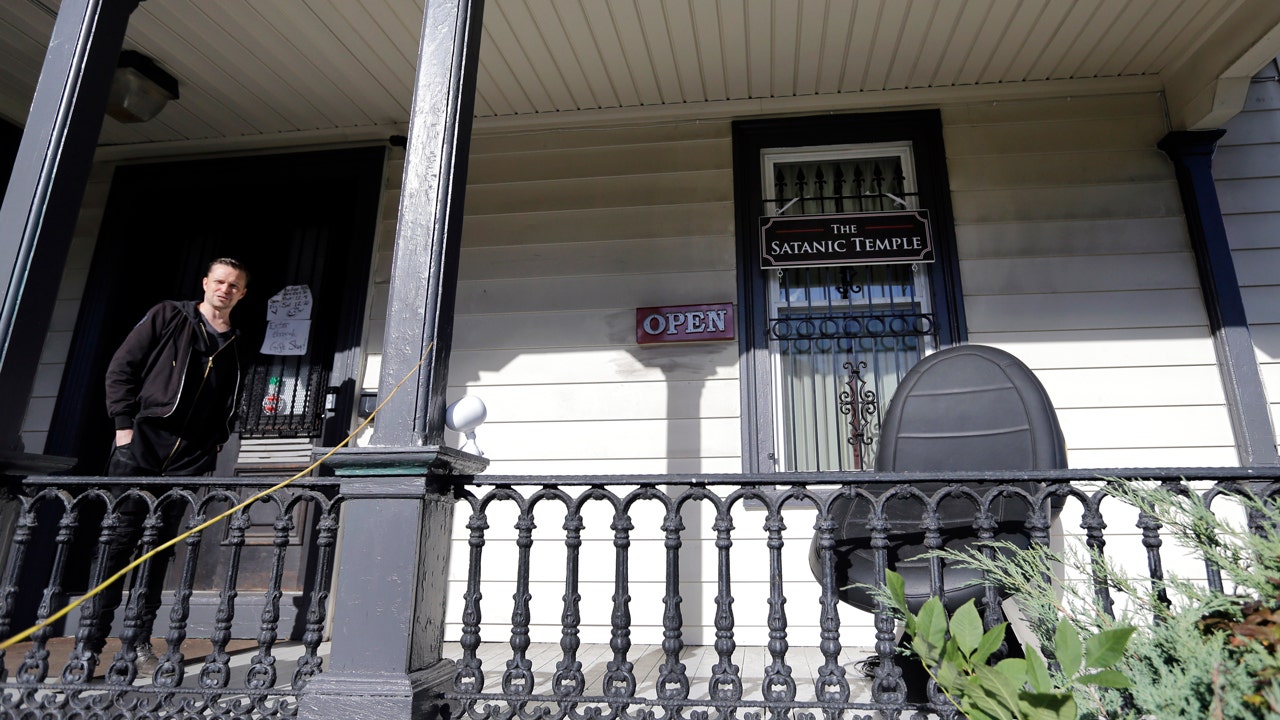Janine, a nurse in Arizona, checked into the hospital for stomach surgery in 2017. Before the procedure, she told her physician that she did not want medical students to be directly involved. But after the operation, Janine said, as the anesthesia wore off, a resident came by to inform her that she had gotten her period; the resident had noticed while conducting a pelvic exam.
“What pelvic exam?” Janine, 33, asked. Distressed, she tried to piece together what had happened while she was unconscious. Why had her sexual organs been inspected during an abdominal operation, by someone other than her surgeon? Later, she said, her physician explained that the operating team had seen she was due for a Pap smear.
Janine burst into tears. “I started having panic attacks trying to figure out what had happened,” she recalled in an interview. “I have a history of sexual abuse, and it brought up bad memories.”
She felt especially unnerved as a medical professional: “Patients put such trust in the medical profession, especially on sensitive topics such as going under anesthesia.” (Janine asked that she be identified only by her middle name. The hospital declined to comment on its policies regarding informed consent for pelvic exams.)
Pelvic exams necessitate physical inspection of the most sensitive areas of a woman’s body. The exams are typically conducted while the patient is awake and consenting at a gynecologist visit, to screen for certain cancers, infections and other reproductive health issues.
But across many U.S. states and medical institutions, physicians are not required to obtain explicit consent for the procedure. Sometimes the exams are conducted — by doctors or doctors-in-training — while women are under anesthesia for gynecological and other operations. Often the exams are deemed medically necessary, but in some cases they are done solely for the educational benefit of medical trainees. At some hospitals, physicians discuss the procedure with patients beforehand or detail its specifics in consent forms, but at others the women are left unaware.
There are no numbers to indicate how many pelvic exams have been performed nationwide without consent, but regional surveys suggest that the practice is not uncommon. A 2005 survey at the University of Oklahoma found that a majority of medical students had performed pelvic exams on unconscious patients, and in nearly 3 of 4 instances they thought informed consent had not been obtained.
Phoebe Friesen, a biomedical ethicist at McGill University, drew attention to the issue in 2018 with articles in Bioethics and Slate, which elicited stories from other women with the hashtag #MeTooPelvic. Dr. Friesen learned about the subject while leading a bioethics seminar at Mount Sinai Hospital in New York, where she heard a narrative from some students that amounted to, “I can put my hand in this woman’s vagina because it helps with my training.”
Sarah Wright, a science teacher in Madison, Wis., said she was given a diagnosis of extreme vulvar sensitivity after a surgery in 2009. She wondered how an operation performed through incisions in her abdomen could have affected her sexual organs, and concluded that either a uterine manipulator was used or a pelvic exam was conducted without her knowledge. So when scheduling another operation with University of Wisconsin School of Medicine and Public Health’s hospital system in 2018, she asked to draft her own consent contract.
“A woman unconscious on an operating table is at her most vulnerable,” Ms. Wright said. “If anyone is going to be penetrating the vagina with their hands or an instrument, that needs to be disclosed.”
She said department administrators rebuffed her request. “They told me: ‘Is this a deal breaker for you? Because if so, you should have your surgery somewhere else.’” Last month, Ms. Wright testified before the Wisconsin legislature in favor of a bill on informed consent.
The University of Wisconsin School of Medicine and Public Health declined to comment on the specifics of Ms. Wright’s case. In 2019, the School of Medicine and Public Health adopted a new policy requiring doctors to obtain informed consent before allowing students to perform sensitive exams, which must be related to routine care, on anesthetized patients.
“The formalization of the sensitive-exam policy provides clear, specific and universally employed standards for consent processes for breast, pelvic, urogenital, prostate and rectal exams,” said Dr. Laurel Rice, Chair of University of Wisconsin Health’s Department of Obstetrics and Gynecology.
Last year, the United States saw a wave of bills banning unauthorized pelvic exams in 11 states. Maryland, Utah, New York and Delaware passed laws mandating informed consent, joining six states with prior regulations on the books. A number of medical institutions have their own policies in place.
“We know we shouldn’t treat women’s bodies like they’re somebody’s property, and that extends to medicine,” said Robin Fretwell Wilson, a professor of law and associate dean at University of Illinois College of Law, who has been a longtime advocate for informed consent laws. “With the ‘Me Too’ movement, we’re at a moment in time where we’re realizing that.”
Sounding an alarm
That moment of realization has been long in coming. Nearly three decades ago, Dr. Ari Silver-Isenstadt was a medical student at the University of Pennsylvania. Just before his gynecological clerkship, a friend cautioned him that he would probably be asked to perform pelvic exams on unconscious female patients.
Dr. Silver-Isenstadt nervously discussed the prospect with his wife, who was studying for her doctorate in the history of medicine. The pair devised a plan: He would show up late for each day’s gynecological operation, conveniently missing the introductory portion when a pelvic exam might be performed.
After several weeks, he was reported to the medical school dean, and he worked out an arrangement to finish the course without conducting pelvic exams on anesthetized patients. But he kept a troubled eye on the practice. In 2003, Dr. Silver-Isenstadt was co-author of a study titled “Don’t Ask, Don’t Tell,” published in the American Journal of Obstetrics and Gynecology. He surveyed 401 students at five Pennsylvania medical schools and found that 90 percent had performed pelvic exams on anesthetized patients. Completing a gynecological clerkship, he found, was associated with a reduced appreciation of the importance of consent for the procedure.
As Dr. Silver-Isenstadt tried to sound the alarm on the practice, he learned that medical faculty members tended to accept it as a necessary component of a physician’s training. Although the practice has broadly persisted, a number of states passed laws banning it, some citing his paper: California in 2003, Illinois in 2004, Virginia in 2007, Oregon in 2011, Hawaii in 2012 and Iowa in 2017.
“The general public has no awareness of it,” Dr. Silver-Isenstadt said. “When I talked to my colleagues in medicine about it, it didn’t seem like a red flag to them.
Ryan O’Keefe, a fourth-year medical student in Pennsylvania, recently completed his gynecological rotation. He said students were frequently instructed to perform pelvic exams on anesthetized patients; they were told to check the consent forms that patients signed before the operation, although he said he “would not be surprised if now and then people didn’t check.”
What was most unsettling to Mr. O’Keefe were the racial and socioeconomic disparities apparent in his pelvic exam training.
Mr. O’Keefe’s rotation crossed between two clinics in Philadelphia. On one side of the street was a pearly white high-rise serving patients with private insurance, Penn Medicine Washington Square. On the other side was the more run-down Ludmir Center for Women’s Health, primarily for those on Medicaid and the uninsured. At the private insurance clinic, Mr. O’Keefe said, medical students mostly observed as their residents conducted gynecological procedures. At Ludmir, the quality of care was high, but Mr. O’Keefe noted that students were encouraged to get more hands-on experience, especially by stepping in to perform pelvic exams.
“My first experience doing a pelvic exam was in Ludmir, where it’s expected that medical students will do it,” he said. He recalled anxiously maneuvering his hands as he looked to the resident for guidance.
“It leaves a strange feeling in your gut, because it’s the most obvious example of how there’s different standards of care depending on your insurance status,” he said. “It’s like a tale of two clinics.”
A spokesman for the University of Pennsylvania’s Health System said the Perelman School of Medicine includes a dedicated session on health disparities in its obstetrics and gynecology rotation, and the school’s policy mandates that students can only perform pelvic exams under the direct supervision and at the discretion of an attending or resident physician. The spokesman said that the school “will review this matter to ensure that all patients are treated equally in accordance with our institutional policies and values.”
‘Is this a nightmare?’
For medical students, performing unauthorized exams can leave a sense of discomfort that fades with time. But for the patients, the scars can run deeper, sometimes rupturing their sense of trust in health care providers.
One evening in 2007, Ashley Weitz drove to a Salt Lake City emergency room, at Intermountain Healthcare LDS Hospital, suffering from uncontrollable vomiting. She was given an ultrasound and blood work, the standard approach; her attending physician ran through a list of possible ailments. Then he asked if he could run a test for sexually transmitted infections. Ms. Weitz declined, explaining that she was celibate and a childhood abuse survivor, and that she preferred to forgo the exam.
The doctor gave her Phenergan, a sedative. Later, she returned to consciousness with her feet in metal stirrups and a speculum inside of her, cold and foreign. Ms. Weitz cried out in discomfort. She recalled that the doctor responded, “Hang on, I’m almost finished.”
“I remember feeling pain and confusion, like, ‘Is this a nightmare?’” Ms. Weitz, 36, said. “I was very sleepy and sedated. My next memory is looking over and he was bagging the swabs he had collected without my permission.”
Ms. Weitz said that she would have been comfortable with an exam if she had been given a better explanation of its purpose: “If the doctor had more of a conversation with me, I probably would have consented. It was the absence of consent that made this a trauma.”
Ms. Weitz testified before the Utah legislature in favor of an informed consent bill, which was signed into law last year. A spokesman for Intermountain Healthcare said that its “caregivers do not perform exams or procedures, including pelvic area exams without informed consent in accordance with current Utah law.”
Ms. Wilson interviewed medical faculty members in more than a dozen states to gauge the opposition to informed consent policies. She found that doctors often argued that patients implicitly consented to being enlisted in medical teaching when visiting a teaching hospital, or that consent for one gynecological procedure encompassed consent for any additional, related exams.
Last March, the Association of Professors of Gynecology and Obstetrics released a statement recommending that students perform exams on anesthetized women only when “explicitly consented to” and “related to the planned procedure.”
But some medical professionals are dismayed to see the issue legislated rather than negotiated through direct conversation between doctors and their patients.
Dr. Jennifer Goedken, an obstetrician-gynecologist at Emory University, said working in a teaching hospital showed her the importance of giving students hands-on experience with pelvic exams and she initially worried that legislative debates could stigmatize the procedure.
“As doctors that care about women’s health, we don’t want to relegate pelvic exams to something that’s taboo,” Dr. Goedken said. “We want students to learn how to recognize abnormalities and do a good, comfortable exam.” Pelvic exams, she added, are one of the least risky procedures, involving just hands or the blunt end of a speculum, and are critical for reproductive health care.
Sarah Burns, a third-year student at the Ohio State University College of Medicine, said of practicing pelvic exams, “It’s like learning to drive.” Repeated experience is necessary to master the delicate skills, and to overcome the nerves that accompany initial attempts.
But among students now learning to perform pelvic exams, there is a growing awareness of the need to tend to the patient’s psychological and emotional well-being.
Brigham and Women’s Hospital in Massachusetts, where the method is utilized, also uses consent forms that specify that patients may undergo pelvic exams while anesthetized.
“We let them know what the procedure entails and we vocalize every member who will be participating in it,” said gynecologist Dr. Deborah Bartz. “We think carefully about which patient needs a pelvic exam under anesthesia, who needs to perform it and why.” This has been the hospital’s policy for several years, she said, but it has been more strictly enforced in the last year, to ensure that no procedures are done without transparency or without the patient’s explicit consent.
Many hospitals now work with gynecological teaching associates, or G.T.A.s, who allow students to practice pelvic exams on them as they offer guidance.
Dr. Deborah Bartz, a gynecologist at Brigham and Women’s Hospital in Massachusetts, explained that medical students learn different skills from practicing pelvic exams on conscious and unconscious patients. Examining conscious patients teaches them to listen and respond to feedback; with anesthetized patients, the muscles are relaxed, which makes it easier to feel the ovaries and uterus.
Some medical institutions, including Brigham and Women’s, are now utilizing a method known as trauma-informed care, which emphasizes informed consent and delicate use of language to respect survivors.
Last year, Ms. Weitz revisited her experience with an unauthorized exam as she prepared for her testimony before the Utah Senate, rereading her doctor’s report from that night in the emergency room.
Words floated in front of her: “She is quite somnolent,” “I performed a pelvic exam,” “The patient is adamant that she has never had any kind of sexual encounter that could result in an S.T.D.” Ms. Weitz felt dizzy.
“It put words to this feeling I had for so long, that I had been vulnerable and disrespected,” she said. “I’m not associating all health care with assault, but I have a good reason to associate some health care with trauma. Health care providers are not exempt from that ethical obligation to have obtained consent.”






